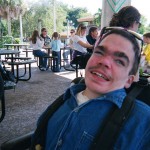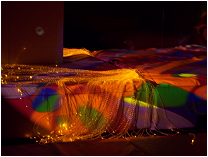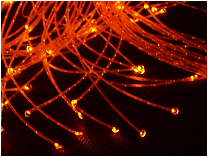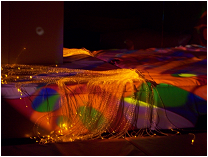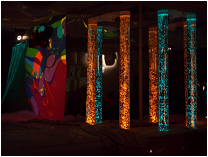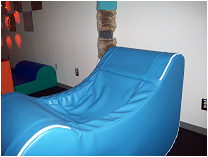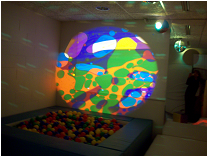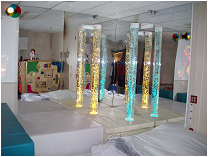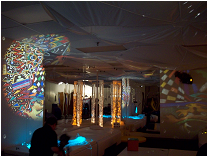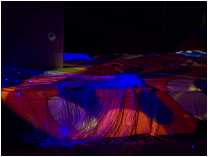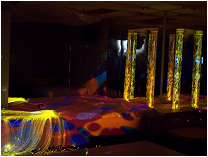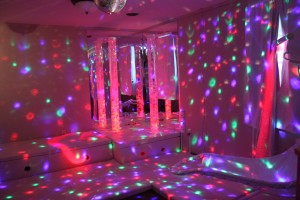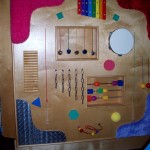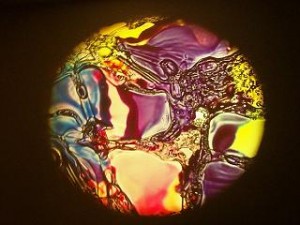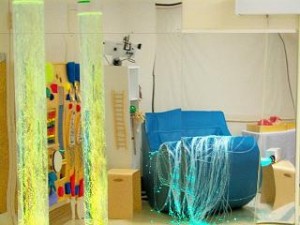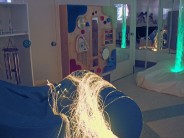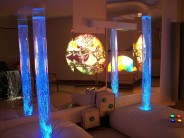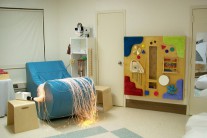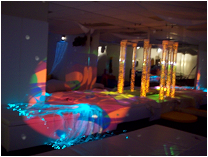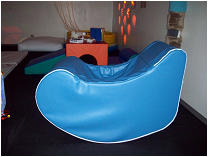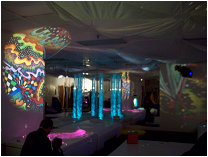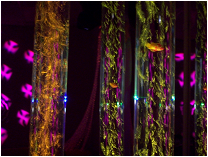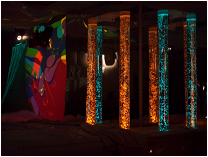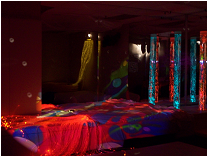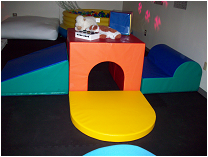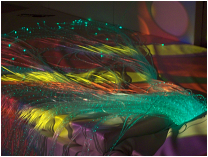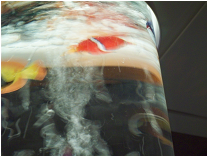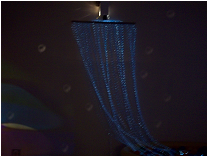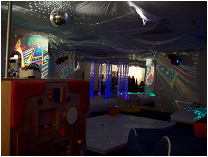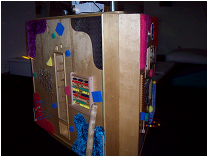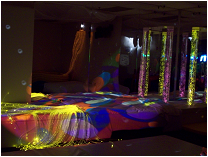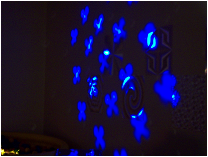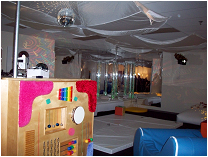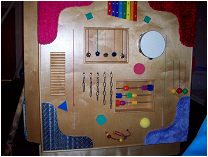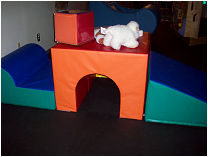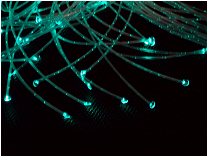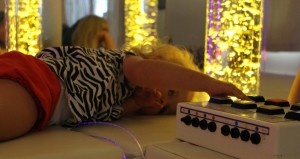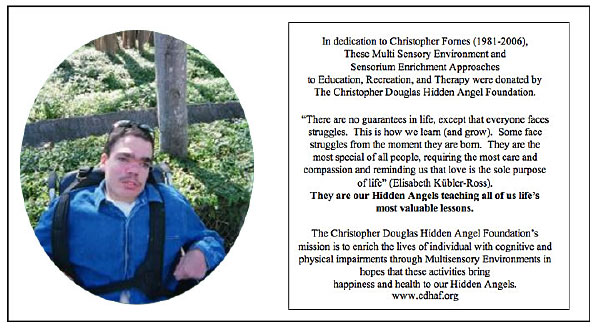“There are no guarantees in life, except that everyone faces struggles. This is how we learn (and grow). Some face struggles from the moment they are born. They are the most special of all people, requiring the most care and compassion and reminding us that love is the sole purpose of life.”– Elisabeth Kübler-Ross
These are our Hidden Angels – teaching all of us life’s most valuable lessons.
Multi Sensory Environments™
Our Multi Sensory Environment™ brand includes providing training/education, therapy and installation of rooms. Our rooms are a safe, non-threatening, dedicated space designed to promote intellectual activity, heighten awareness, promote brain arousal, and encourage relaxation. They are engineered to bring together multi-sensory equipment to stimulate the sensory pathways of touch, taste, sight, sound, smell, and movement without the need for intellectual reasoning. They produce either a calming effect on individuals prone to frustration or stimulates passive individuals who appear withdrawn. In our rooms, stimulation can be controlled, manipulated, intensified, reduced, presented in isolation or combination, packaged for active or passive interaction, and matched to fit the perceived motivation, interests, leisure, relaxation, and therapeutic and/or educational needs of the user.
Multi sensory enrichment has been observed to relieve stress, anxiety, and pain while also promoting changes in brain arousal and one’s neurochemistry positively affecting an individual’s drive and motivation.
Installation
CDHAF provides installation services of their Multi Sensory Environment™ rooms to eligible organizations across North America. To date The Christopher Douglas Hidden Angel Foundation, has funded and built over 60 Multi Sensory Environments from Miami, Florida to Portland, Oregon and from Bay of Islands, Newfoundland to Calgary, Alberta. The Foundation has to date designed and provided facilities for what is estimated to be over 10,000 individuals.
Our approach is based on well-documented studies of neurological cognition and emotional development. We offer advisory and financial support for the establishment of integrated, publicly accessible facilities and for basic research and education.
Training/Education
Throughout Europe and the United Kingdom, Multi Sensory rooms have been used as an educational tool and leisure activity for individuals with intellectual disabilities. More recently they have become popular in the United States. It is our objective that the Hidden Angel Foundation and its training efforts will provide direction in the future practice and research of Multi Sensory rooms. With the hope that this leads to enhanced quality of life, health, and social well-being for children and adults with intellectual, physical and emotional challenges.
By adapting and modifying the environment we enable the empowerment of children and adults with significant disabilities. Our Multi Sensory Environments™ provide alternative and powerful forms of sensory stimulation for individuals who have previously been isolated in their perceptual disabilities, providing new ways of encouraging learning, motor development, cognitive development, language and social interaction skills.
Therapy
Research has shown that Multi Sensory rooms can improve the health, social well-being and quality of life of persons with severe and profound intellectual disabilities, and of the elderly. In 1997, the Journal of Intellectual Disabilities Research published research showing that time spent in a room full of lights, textures, sounds and smells increases concentration, alertness, calmness, and general awareness of the surrounding world. Individuals also appear happier while in the room, and tend to vocalize more and stay on task. For those with self-injurious or autistic behaviors, the gentle stimulation has a soothing effect and helps relieve agitation and promote relaxation. Additionally, children with perceptual difficulties appear to derive pleasure from the visual, auditory, and tactile experiences.
In addition to heightened sensory perception, the rooms also aid in cognition. Sensory organs have often been referred to as “the window to the brain”. One’s nervous system continues to develop during the first six years of life, and this maturation is dependent upon the successful stimulation of the nervous system via sensory organs. Functional and cognitive development takes place as the nervous system matures. Failure to mature properly results in problems with regard to cognition and function (i.e. trauma, injury, environmental factors, genetics, and medical issues).
In order to take advantage of brain plasticity (the ability to learn new functional skills, re-learn old skills, and compensate for brain injury or neurological inmaturation) to improve or restore function, the brain must be furnished with a source of increased synaptic connections and sensory-motor input. Adequate stimulation and use of motor ability produced in sufficient frequency, intensity, and duration excites the brain, improves its organization, and permits increased functional activity. By working towards a better-organized, stronger and more efficient nervous system, individuals become better able to demonstrate and to access their true potential. For individuals with cognitive impairment, Multi Sensory stimulation is often the only input to improve and increase synaptic connections and neuron-transmission.
